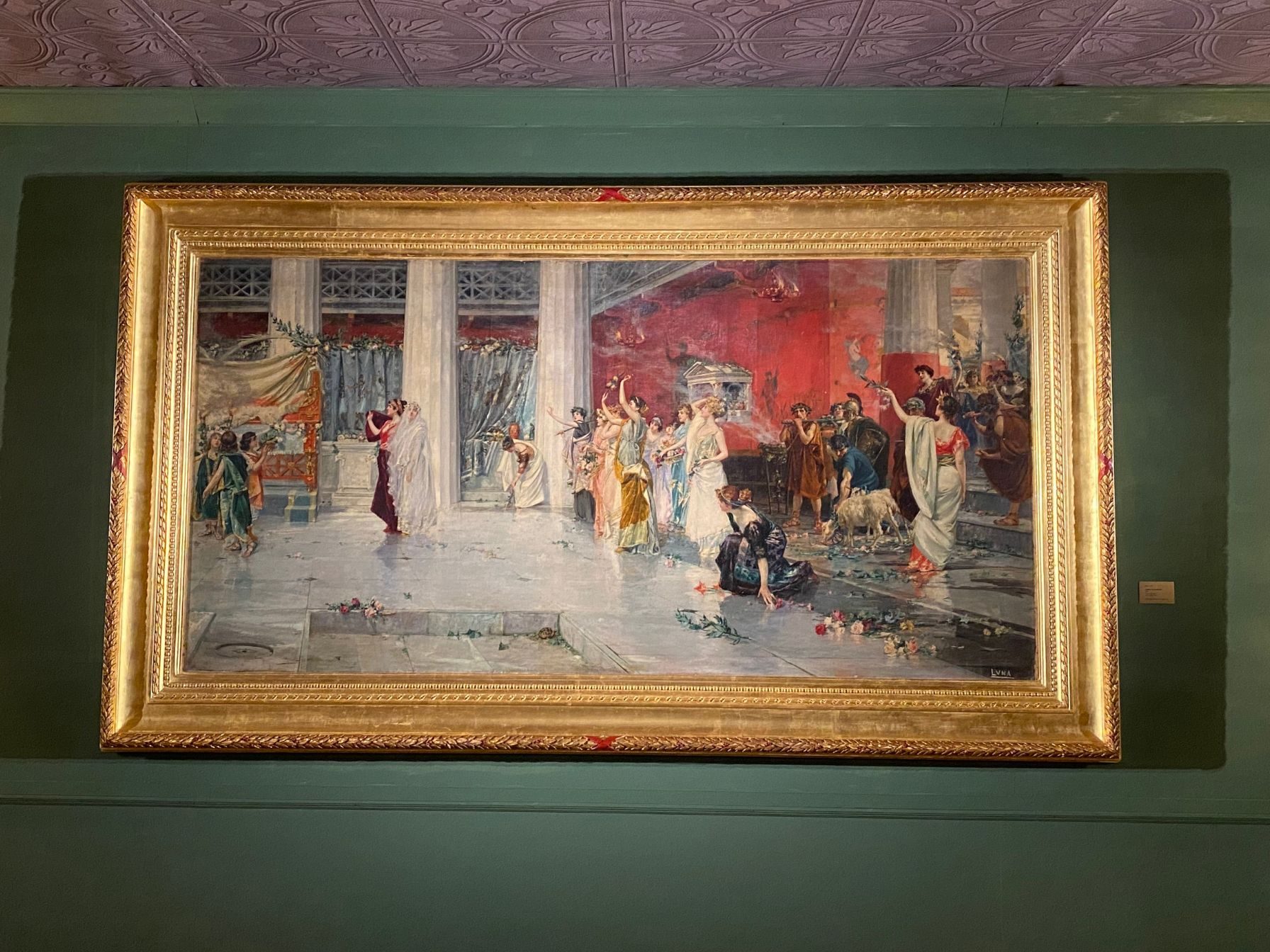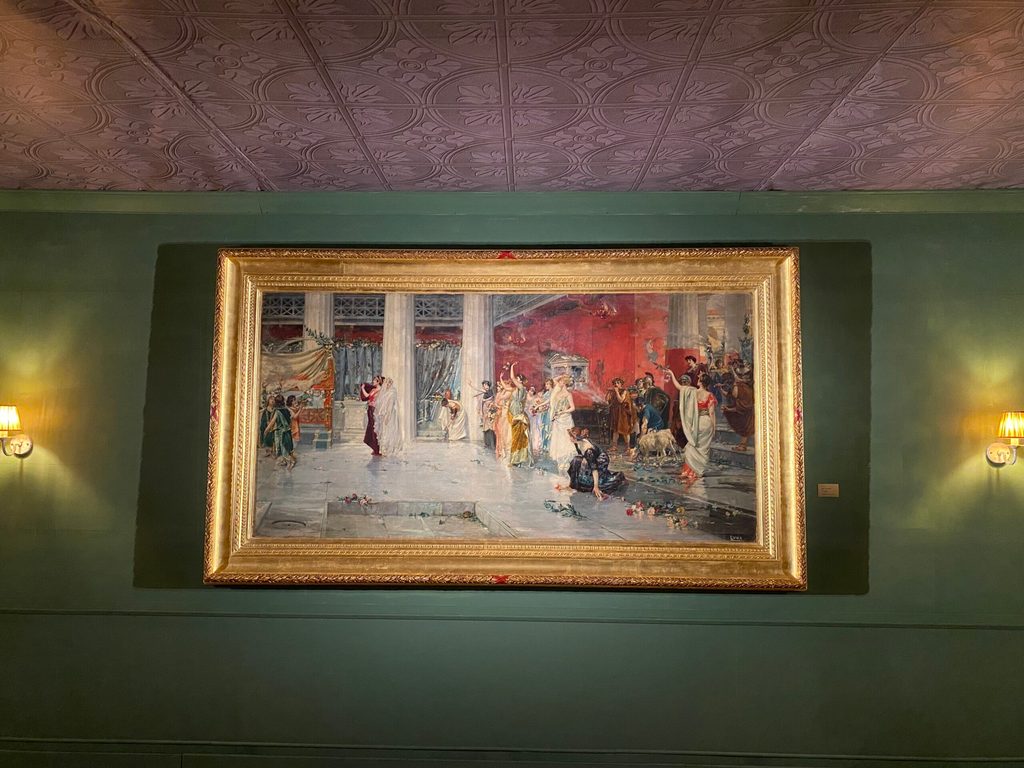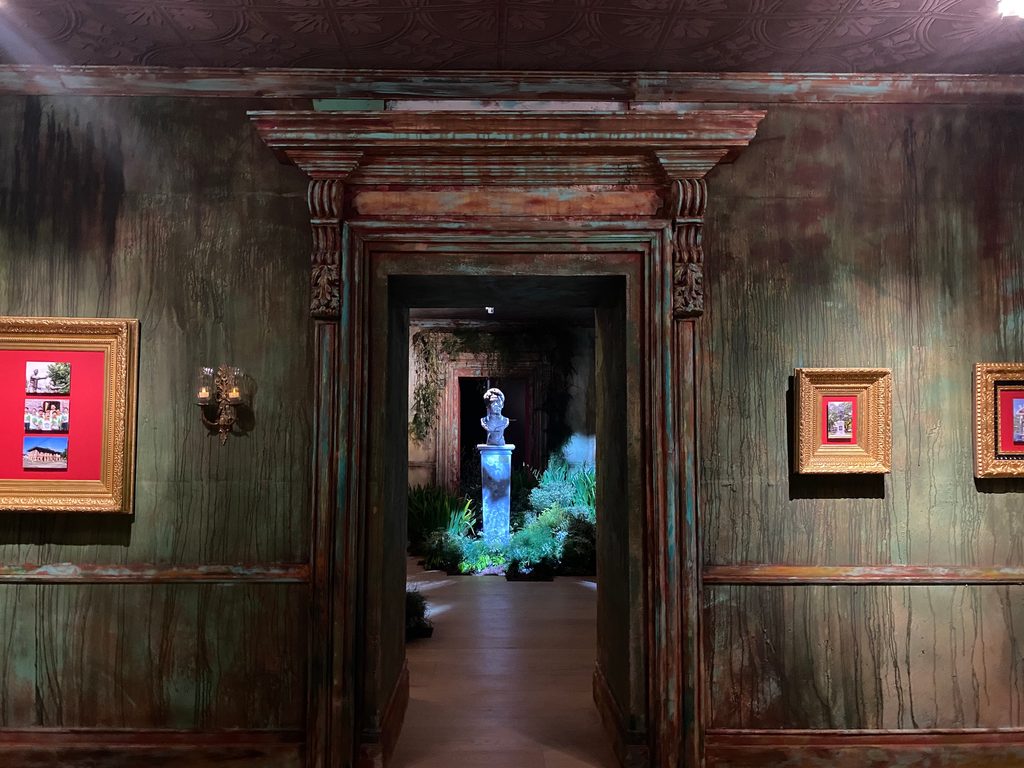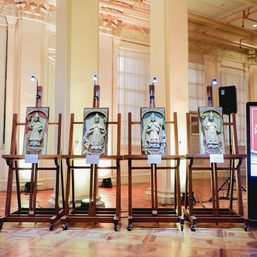SUMMARY
This is AI generated summarization, which may have errors. For context, always refer to the full article.

MANILA, Philippines – After disappearing from the public for 132 years, Juan Luna’s missing masterpiece Hymen, oh Hyménée! has finally been tracked down. And it’s now returned to Luna’s home country for the first time ever.
The painting, feared to have been destroyed during the revolution, is hailed by many art collectors as the “holy grail of Philippine art” – due to both Luna’s brilliance and the air of mystery surrounding the piece. It belonged to his personal collection; he never made it with the intention of submitting it in a competition or as a commissioned work.
Unlike the much-acclaimed Spoliarium, Hymen, oh Hyménée! tells a gentler story. In hues of marble white and bold red, it depicts what looks to be a Roman wedding feast.
And in many ways, the painting is highly personal to Luna, who worked on it during his honeymoon trip with his wife, Paz Pardo de Tavera, daughter of the Grand Inquisitor of Spain. Scholars speculate that the imagery could mirror the artist’s own wedding to his wife – one that, at first, drew heated disapproval due to their different social status and so-called “races.”
The last time the public had ever seen the piece was in 1889, when it won bronze in the groundbreaking 1889 Paris World’s Fair – the same one that revealed the Eiffel Tower to the world. From that point on, its whereabouts would become unknown for more than a hundred years.
So how did we find it again?
‘Find of the century’
The quest for Hymen, oh Hyménée! was nearly ten years in the making – first a dream, then an obsession of one man: art collector Jaime Ponce de Leon of León Gallery.
“It was, I thought, the greatest painting that didn’t exist,” De Leon said during the exhibition’s opening night on Friday, June 9.
For decades, proof of the mythical painting existed only in whispers and rumors, sketches on Luna’s old paintings, and yellowed photographs. But De Leon continued undeterred, chasing leads around Europe.
“The dream of finding it would thus become a tireless obsession and I would find myself haunting galleries and dealers, famous and some infamous, all over Europe, courting old maids and befriending aristocrats, and everybody and anybody in between who had some connection to Juan Luna and to the Philippines,” he said.
Until – finally – in 2014, de Leon received a call from an old friend instructing him to be at the doorstep of a “certain aristocratic home” in Europe by 10 am.
And, behind the curtains, there it was.

De Leon skirted around the details of how exactly he acquired the painting. But once it came into his hands, he kept it safe in a crate in his storeroom, waiting for the perfect moment to reintroduce it to the Philippines.
In 2022, thanks to “extraordinary circumstances,” de Leon agreed to loan the piece to Ayala Museum, where it now sits as the centerpiece of the exhibition Splendor: Juan Luna, Painter as Hero.
“It’s such an opportune time that a painting that was in the thick of all of these things in world history and of course, Philippine history – that has never been seen 130 years after – suddenly came to our knowledge,” Jei Ente, Ayala Museum’s assistant curator, told Rappler on Friday.
It’s uncommon for an exhibition to revolve around a single work of art. But the rediscovery of this long-lost cultural treasure tells many stories – not just those that begin on the canvas, but also those about a time and place not our own.

The exhibition unfurls the context surrounding Hymen, oh Hyménée! It looks at how the world was on the cusp of change in 1889, as the Philippines inched toward its own revolution. It explores how Luna’s success in Europe inspired a sense of nationhood and Filipino spirit. And it poses as many questions as it answers: who was Juan Luna really, the hero, the painter, the person?
To commemorate the 125th anniversary of Philippine independence, the exhibition will open to the public on June 12. Admission to Ayala Museum and Splendor: Juan Luna, Painter as Hero will be free. – Rappler.com
Add a comment
How does this make you feel?





There are no comments yet. Add your comment to start the conversation.